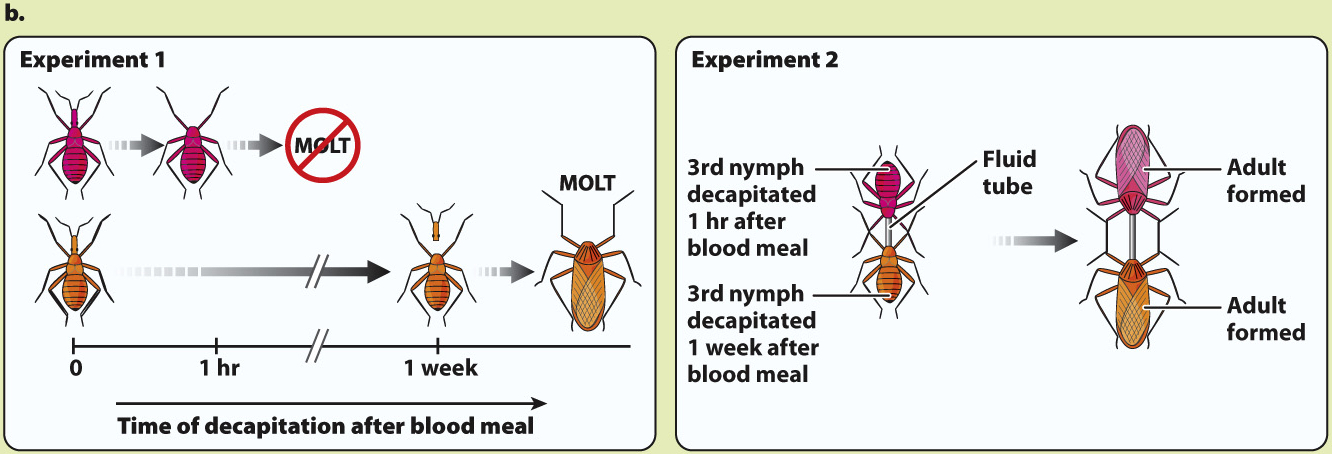HOW DO WE KNOW?
FIG. 38.2
How are growth and development controlled in insects?
BACKGROUND During the 1930s, British physiologist Vincent Wigglesworth studied how a blood meal taken by the bug Rhodnius triggered its molting and growth. This work pioneered the discovery of hormonal substances that stimulated its growth. Rhodnius goes through five successive larval stages (called nymphs) before becoming a winged adult, as shown in Figure 38.2a. Each developmental step is triggered by a blood meal.

HYPOTHESIS Wigglesworth hypothesized that a substance (specifically, a hormone) that diffuses from the head triggers molt in Rhodnius.
EXPERIMENT Wigglesworth decapitated juvenile bugs at different intervals of time after a blood meal and observed whether or not molting occurred. (Decapitation does not kill the insect.)

RESULTS Wigglesworth showed that if a bug is decapitated less than an hour after a blood meal, it fails to molt. If a bug is decapitated 1 week after the blood meal, it molts (Fig. 38.2b, Experiment 1). He also found that if he used a fluid tube to join the body of a bug decapitated immediately after a blood meal with the body of one that wasn’t decapitated until a week after feeding, the bodies of both bugs molted (Fig. 38.2b, Experiment 2). This experiment demonstrated that the diffusing hormone could trigger molting in the bug that lacked the hormone because of immediate decapitations.
CONCLUSION A substance diffuses from the head in Rhodnius and triggers the molting process.
FOLLOW-
SOURCES Wigglesworth, V. B. 1934. “The Physiology of Ecdysis in Rhodnius prolixus (Hemiptera). II. Factors Controlling Moulting and ‘Metamorphosis.’” Quarterly Journal of Microscopical Sciences 77:191–